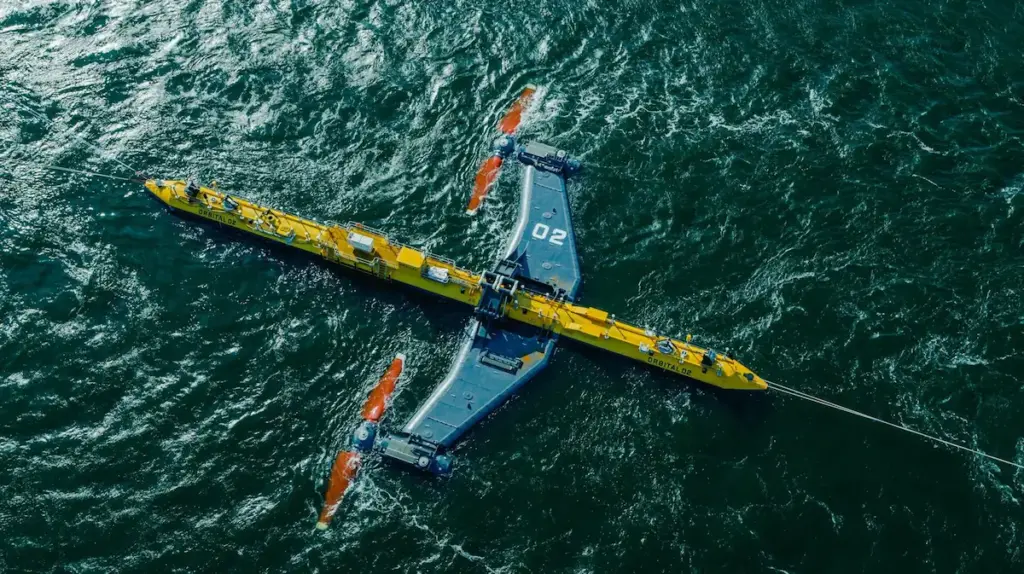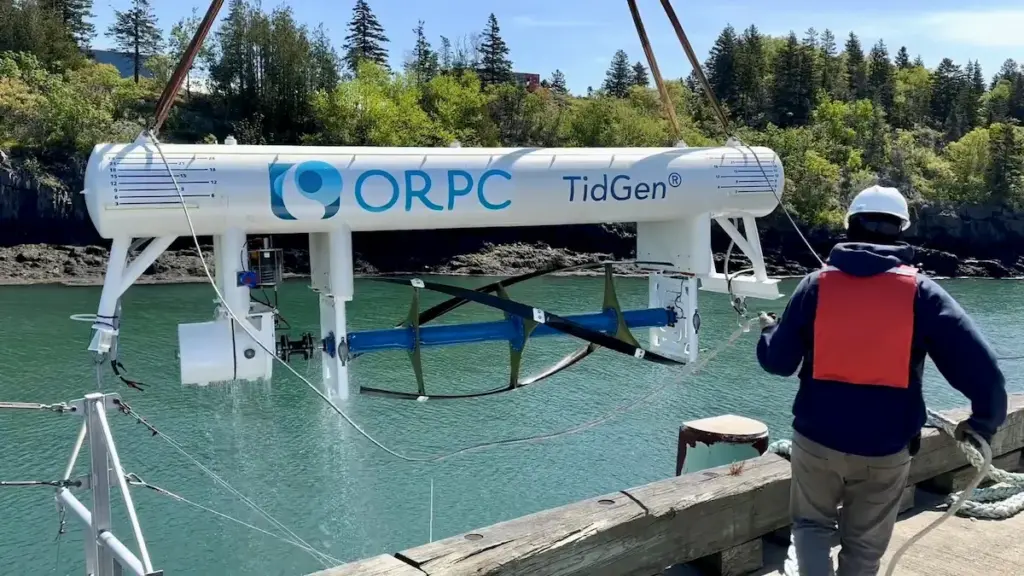As people around the world grapple with climate change, scientists and engineers are exploring new and exciting ocean-based solutions to generate renewable energy. Tidal energy is emerging as another clean energy source alongside offshore wind farms and wave energy technology. And let me tell you, its development will be something to watch.
What is tidal energy?
Ocean tides are governed by the regular rises and falls of the Earth’s ocean waters caused by the gravitational forces between Earth, the moon and the sun. These invisible interactions create regular water movement, which we see as the cyclical high and low tides along coastlines.
Never miss an update
Enter your email and never miss an update
<!– –>
How does tidal energy work?
Tidal energy production, specifically tidal stream systems, utilize devices attached or anchored to the seafloor which capture kinetic energy as tides rush in and out. The moving water pushes the blades of a turbine, like an underwater propeller or a similar component, in order to turn a generator that creates electricity.
What are the advantages to tidal energy?
Predictability. Tidal patterns are highly predictable since they are driven by the highly regular positions of the the moon and sun and the rotation of the Earth. The cyclical nature of tides ebbing and flowing makes it easier to plan for and balance tidal energy supply with energy demand within a power grid.
Consistency. The ocean and gravity never stop. Night or day, rain or shine, the kinetic energy of the ocean can produce electricity without end. This regularity complements other existing renewable energy sources such as solar and wind power.
Location. Tidal devices are practically invisible to humans because they are often fully or partially submerged. Their proximity to large coastal population centers reduces the need for long transmission lines too. However, there are only a limited number of locations where the tides are strong enough to make sense for deployment. These prime locations often occur where the ocean is constrained between land masses, such as an ocean channel, narrow bay entrance or between islands.
What are the challenges for tidal energy?
Durability. Water is 800 times denser than air, and while that can generate lots of clean energy with fewer devices, the ocean can be a pretty rough place. This causes engineering challenges when designing robust devices and infrastructure that can stay in the ocean and not get destroyed. Ocean salt water is also corrosive to metals, creating a maintenance challenge to overcome. These challenges, along with operations and maintenance activities needed to take place in the ocean, can drive up costs.
What are the environmental impacts of tidal energy?
Scientists have studied these projects around the world for the possibility of animal collisions, noise pollution, seafloor and water column habitat changes, ocean circulation changes, marine mammal entanglement risks and other considerations. More information and evidence are needed to better understand the collision risks to marine animals; however, experts generally characterize the other risks as relatively low. As multiple tidal devices in a single area (an array) are deployed, additional impact studies will be needed.
What are examples of tidal energy being used today?
Deployed in Scottish waters, the O2 tidal turbine made by Orbital Marine is the most powerful tidal stream generator in the world and has been generating enough electricity to power 2,000 homes each year since 2021. It’s as long as a jumbo jet airplane and moored to the ocean floor. When operating, its twin 1 MW capacity turbines look more like a flying Star Wars spaceship from the new Ahsoka series than an energy generator. Orbital Marine recently won contracts to deploy three more of these devices in the region with an option for twelve more, so look out for a fleet of O2s soon.

if(typeof window.oc_media_credits === ‘undefined’) {
window.oc_media_credits = {};
}
window.oc_media_credits[70540] = “Orbital Marine”;
Not be creatively outdone, the Swedish company Minesto has produced 100kW capacity underwater tidal kites which “fly” through tidal currents in a figure-eight pattern while tethered to the ocean floor. The lifting force of this pattern augments water speeds to push a turbine at the back of the kite to produce electricity, likely expanding the number of sites where tidal energy can be deployed.

if(typeof window.oc_media_credits === ‘undefined’) {
window.oc_media_credits = {};
}
window.oc_media_credits[70543] = “Minesto”;
The United States has a few companies stepping into tidal energy too. The Ocean Renewable Power Company based in Maine will be building from its decades of experience developing river-energy generators this year by testing a TidGen tidal device in Cobscook Bay, Maine. The company has plans for four upgraded versions in the coming years.

if(typeof window.oc_media_credits === ‘undefined’) {
window.oc_media_credits = {};
}
window.oc_media_credits[70544] = “ORPC”;
What’s the future of tidal energy?
Many hurdles remain for tidal energy moving forward, but as individual devices prove successful, we’re likely to see more of them in test arrays and single unit commercial deployments that are monitored for study and avoidance of any negative environmental impacts. Through its funding for research and development, tax incentives and loans, the Inflation Reduction Act will likely spur much of the expansion and innovation in tidal and other renewable energy forms over the next decade. With all that said, expect to hear more about this source of clean ocean energy.
The post What is Tidal Energy? appeared first on Ocean Conservancy.

